Table of Contents
- Film analysis
- QUOTE ANALYSIS
- TRADITION VS. MODERNISATION
- MEDIA REPRESENTATION/ MANIPULATION
- FAMILY RELATIONSHIPS
- POWER DYNAMICS AND LEADERSHIP
- PERCEPTION VS. REALITY
- Essay Question 1
- Essay Question 2
- Essay Question3
- Essay Question 4
- Essay Question 5
- Essay Question 6
- Essay Question 7
- Essay Question 8
- Essay Question9
- Comparative essays
Film analysis
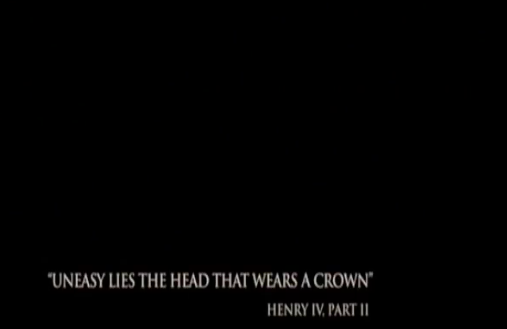
From the commencement of the film, the black ominous background and the preface indicate the foreshadowing adversity to the crown, or the Imperial family headed by the Queen. As such, this summarises the understanding that the well-respected monarchy lives in constant trepidation as difficulties arise to challenge their authority and leadership.
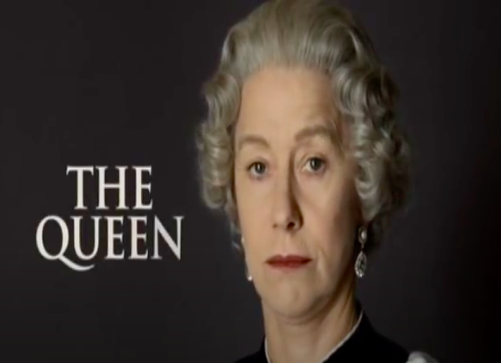
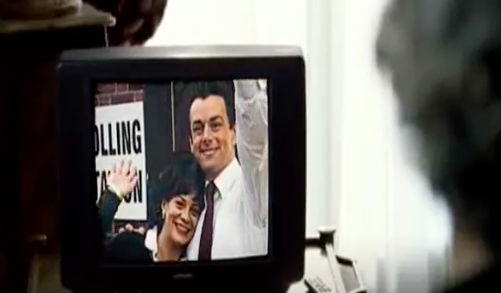
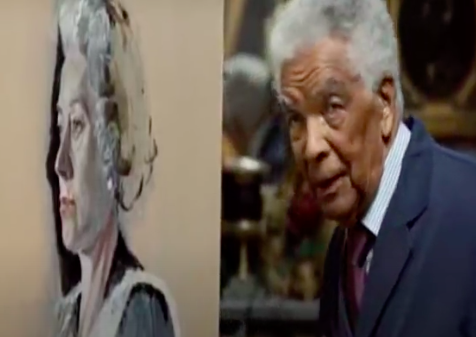
The bright colour scheme allows the footage of Tony Blair and his wife to appear authentic to the time period of 1997. This moment indicates Britain at the cusp of change as modernisation threatens the establishment existing through protocols and rules. The difference can be perceived through the queen’s representation in the portrait to appear distant, cold and rigid, reflecting the adherence to customs and traditions whilst the Blairs are characterised by the media to be affectionate, warm and friendly.
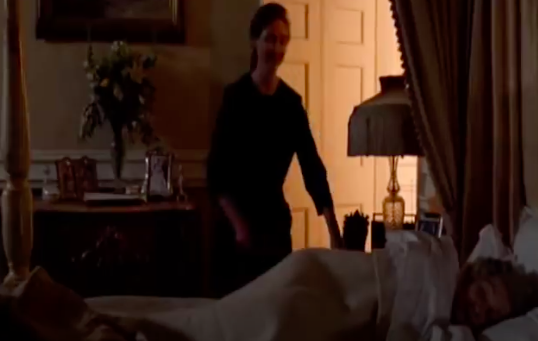
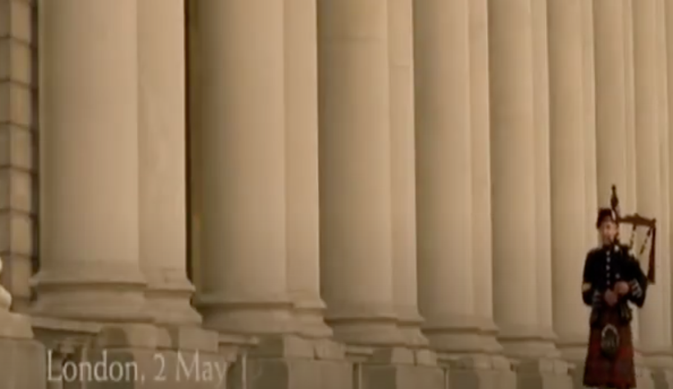
The panning shot upwards indicate the power and dominance of the Crown, further emphasised by the glorified sounds of violin and saxophone. Her gaze at the audience immediately breaks the fourth wall, as though she is connecting to the audience with her gaze even with her restrained facial expressions. As such, this foreshadows possibly a glimpse into the emotions and thoughts of the highly respected yet mysterious monarch.
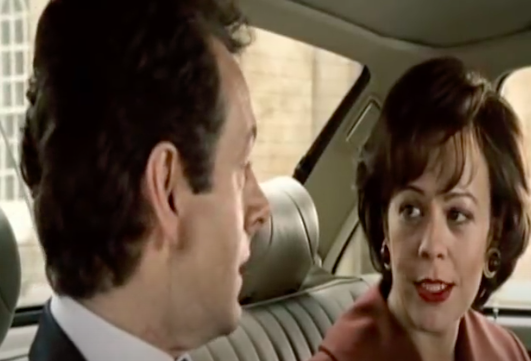
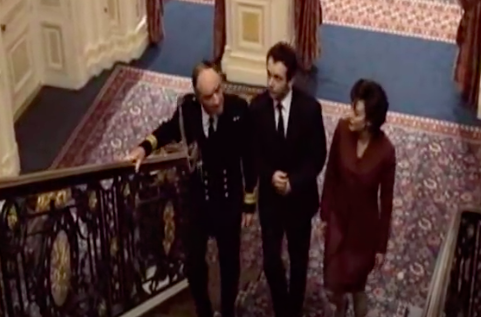
The diegetic sounds of the bagpipes being played by the Sovereign’s Piper immediately situate the audience to perceive the institution as a reflection of the strict obedience to various traditions established by past precedents. As the camera captures a full body shot of the bagpiper in the authentic kilt in the distance, this subtle yet critical detail further reinforces the respect and considerations for the accuracy of the time period. The cut to the Queen’s bedroom interior and her maid suggests simplicity and modesty as the maid is dressed in humble plain black, while the Queen is seen in a basic white, indicative of her constant strive for perfection. It is also worth noting she is not with Prince Phillip, thereby foreshadowing the strained relationship between the two.
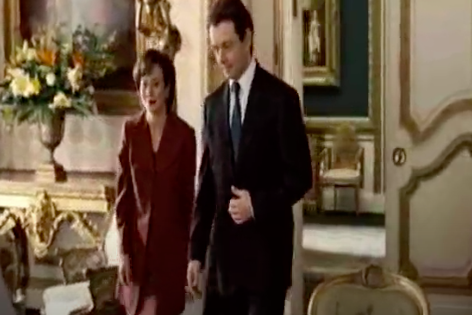
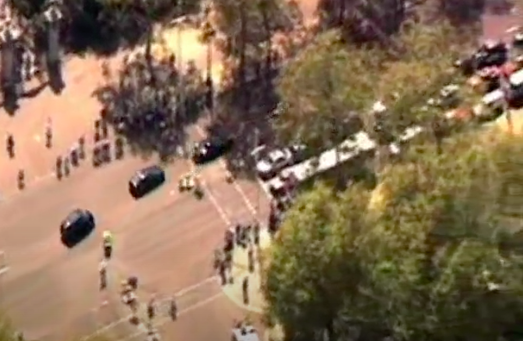
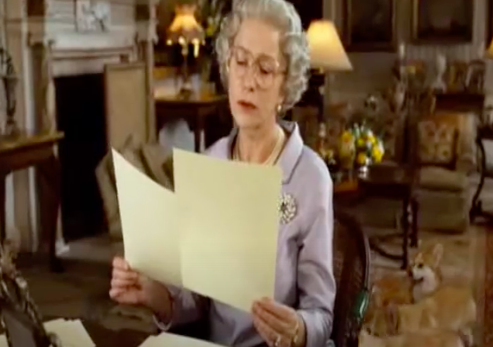
The real footage documenting the first day of Blair being elected as the Prime Minister is juxtaposed against an imaginative interpretation of the Queen in the Palace. The utilisation of such editing technique enables Frear to manipulate the truth without disrupting the flow of the story through the smoothly cutting to the scene of the Queen. As such, the line between what is real and what is not becomes blurred through Frear’s careful inclusions of these authentic footages.
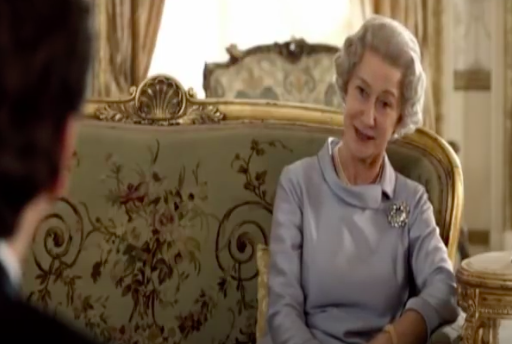
The juxtaposition in the camera angles demonstrate the atmosphere at the instance of these particular scenes. While Tony and his wife have an equal relationship, suggested by the eye level close up shot highlighting the intimacy between the two, the latter scene is shot with the high angle, demonstrating the Blairs as being inferior, lacking power in the presence of a formidable force that is the Crown. Cherie solidifies her position as a supporter of Republican values from her exaggerated eye roll at the Royal protocols.
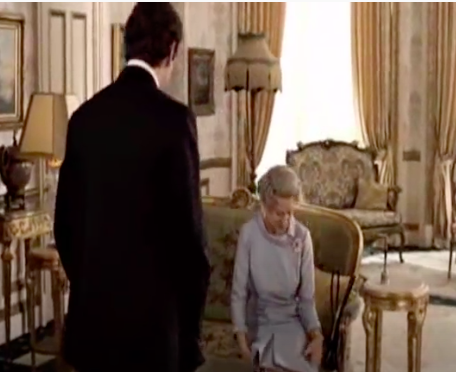
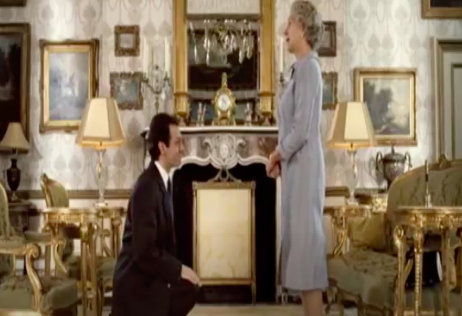
The divide in power dynamics is clearly depicted the moments Blair is asked to be the Prime Minister by the Queen. His awkward gestures and nervous speech are juxtaposed against the Queen’s calm demeanour as she corrects his assumption in a rather condescending manner. As such, even though Blair won the election by a landslide, he is fully aware that he is subject to the power of the Crown. She quickly withdraws her hand, dismissive almost, once again depicting an air of formality and distance
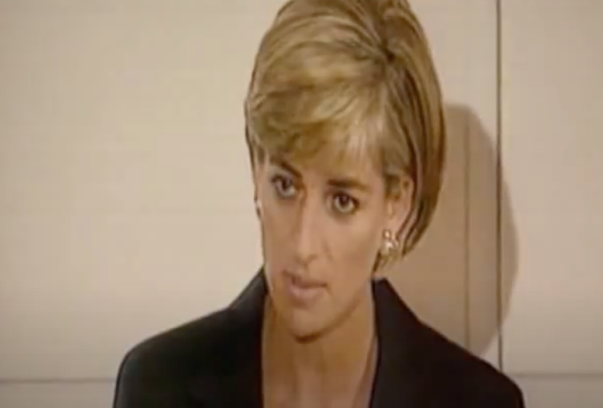
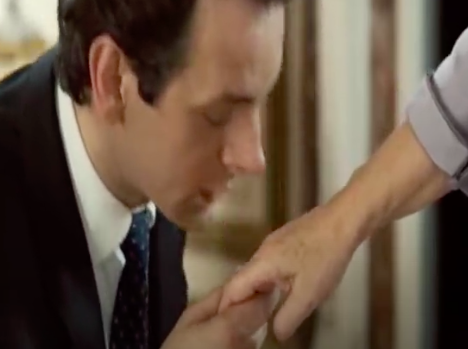
What is plain to see here is Cherie’s unfamiliarity with the royal protocols, notably demonstrated through the difference between her unnatural and forced bow in comparison to the equerry’s natural and graceful greetings. Her previous disdain and mockery towards the traditional institution dissipate. Instead, she becomes overwhelmed in the presence of the Crown as her timid gestures are similar to that of her husband’s. The couple walk awkwardly to not show the Queen their backs upon being dismissed, unable to adjust to such customs.
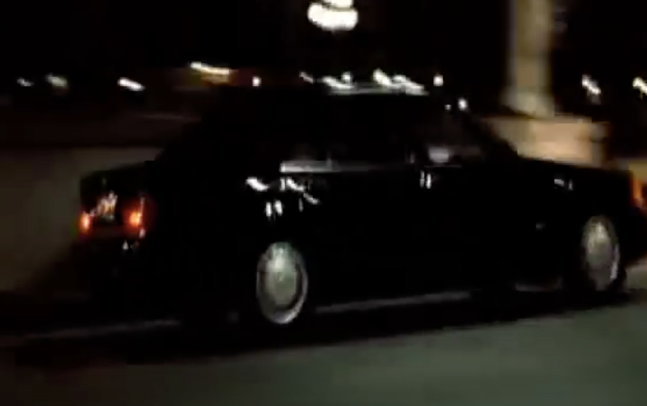
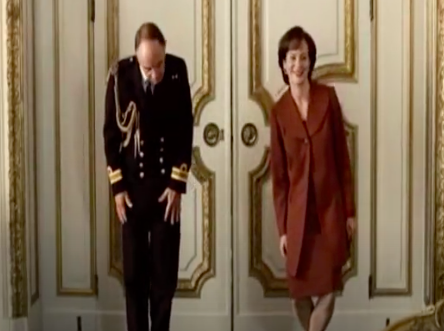
The cut to Diana’s famous footages after the Queen’s exit depicts the highly publicised life of the “People’s Princess” filled with scrutiny by the media. As such, the editing technique cutting between the infamous car chase leading to the horrific crash (imaginative interpretation) and the real media recordings of Diana attempting to cover the camera before the screen turns black completely indicate her desperate attempts to live the life away from public attention. The lingering darkness of course is a rather foreboding phenomena, suggesting the upcoming tragedy.
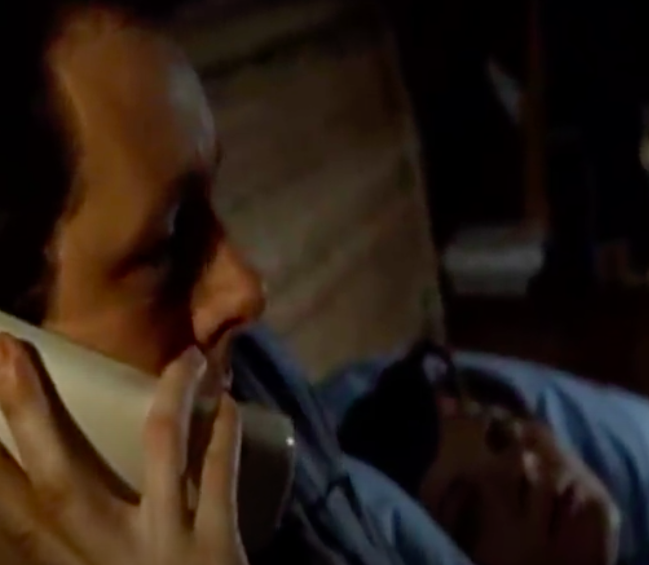
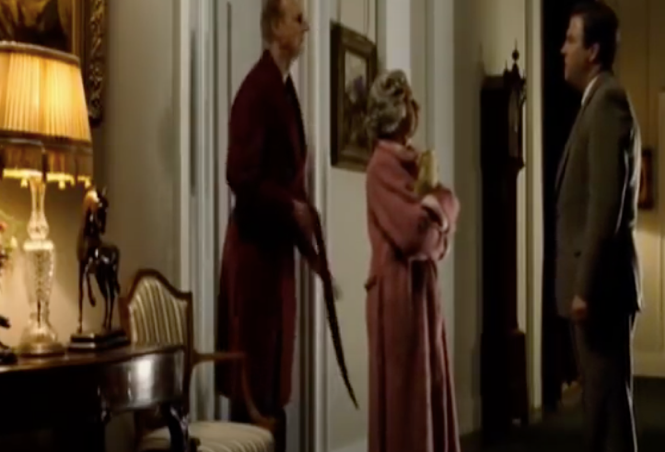
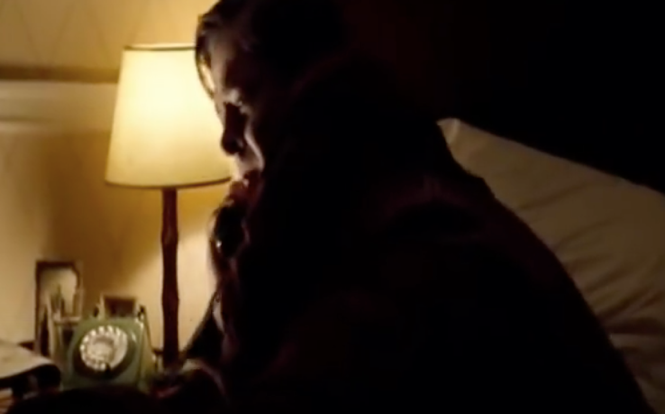
The responses to Diana being in the terrible incident provides an insight to the divide in the classes between the Sovereign and those serving them. The Queen and Prince Philip are in an extravagant bedroom with expensive decorations, dressed in sophisticated robes. In contrast, Janvrin and the Blairs are answering the phone calls themselves in a rather modest bedroom. The gloomy atmosphere is intensified by the dark shadows in the night, foreshadowing the imminent adversity.
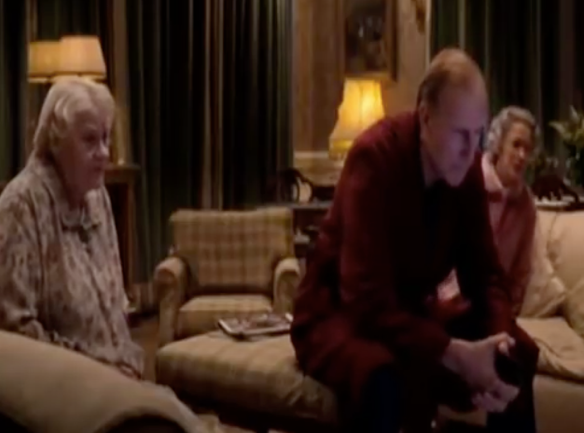
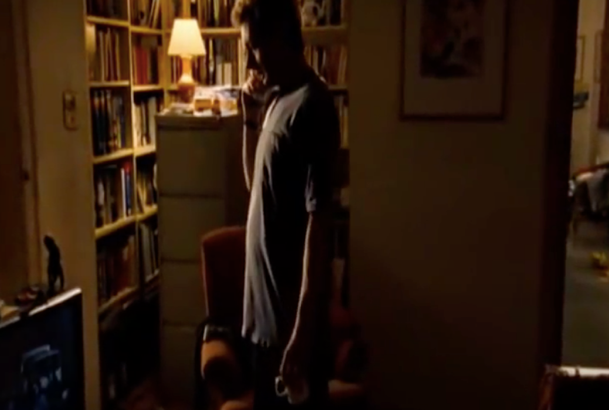
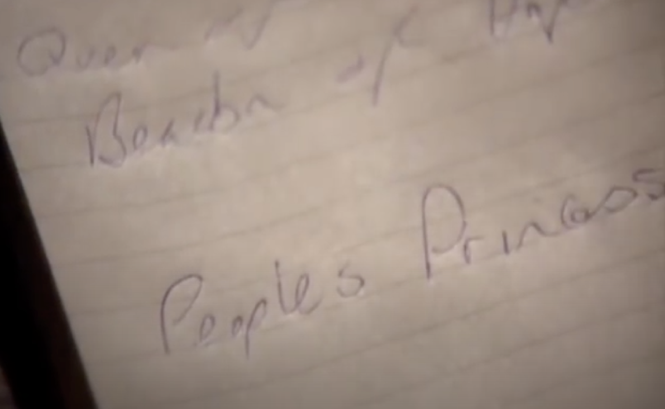
While Prince Charles is filled with concern and worry for his ex-wife, intending to lead to Paris using a private jet, Queen Mother, the Queen and Prince Philip are more conscious of the media’s reaction. Through this interaction, the audience is made aware of the strained relationship between Prince Charles and his family in regard as he is restrained from expressing his apprehension to his wife directly. What is even more prevalent is the struggle to balance the public and the private world as the monarch is constantly criticised by the media, thus depriving them a chance to deal with private manners. His exit ultimately suggests his disappointment and differing stance compared to the rest.
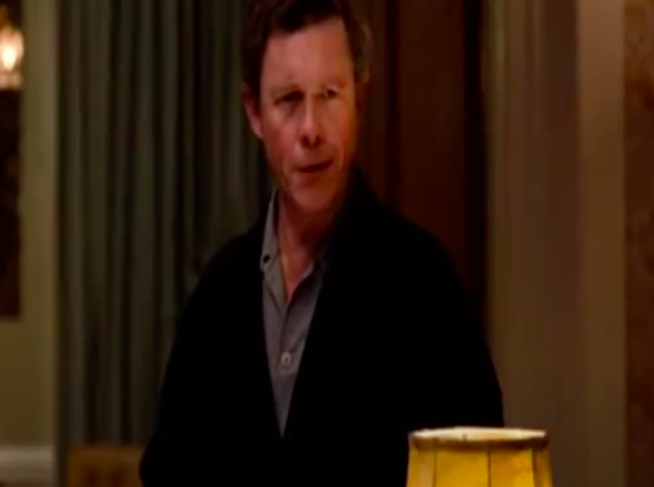
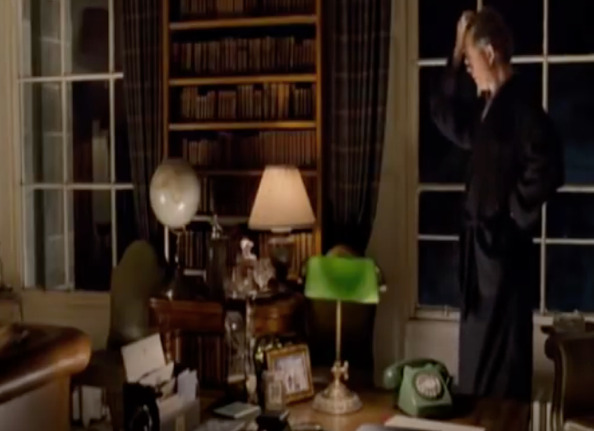
In contrast, the Prime Minister prioritises the matter of her death as he proposes the need to make a speech regarding this devastating news, understanding its urgency due to the influence Princess Diana has in the public. As such, his conduct greatly contradicts to the Queen who thinks that this as a private matter. Therefore, this suggests the differing stances of both leaders, indicating conflict which arises from their individual judgement. In addition, the term “People’s Princess” receives a close up, demonstrating that Diana is not an entity of her own, but rather public possession, further reinforcing the lack of privacy for those with high profiles in society.
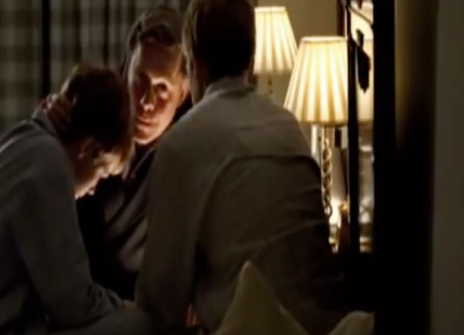
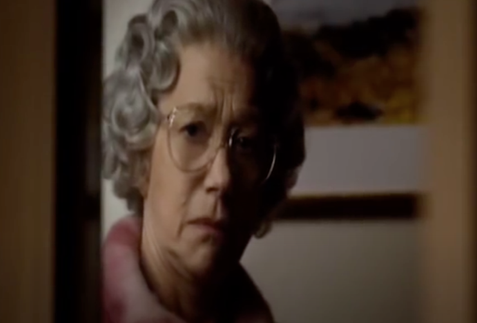
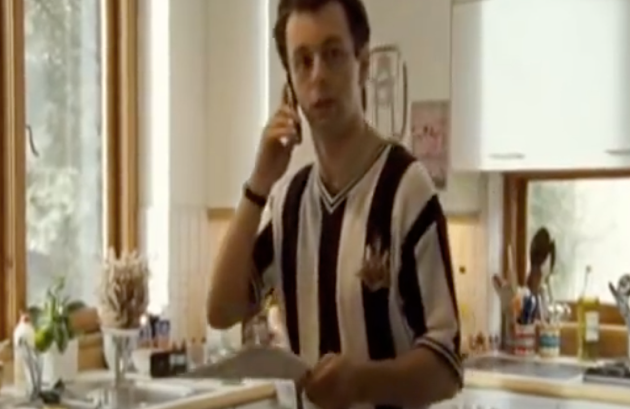
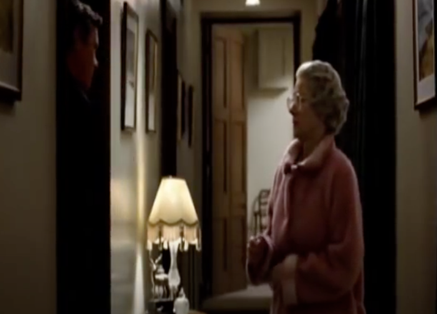
This scene further reinforces the strained relationship between Prince Charles and the Queen. As she views the expressions of William and Harry, the close up shot demonstrates her extremely concerned and saddened state. Yet, her emotions are not delivered to Prince Charles as she hesitates to touch him to provide some condolences to him and awkwardly retreats her hand, indicating her inability to deliver her emotions and support to her child as she has always been expected to be distant and controlled. In turn, Charles eyes are filled with tears in a close up shot, suggesting his ability to express himself as well as his lack of expectations for his mother to show any sign of kindness. His bitter remarks thus reflects his own disapproval of his mother’
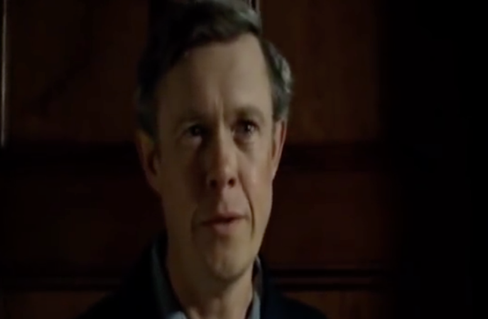
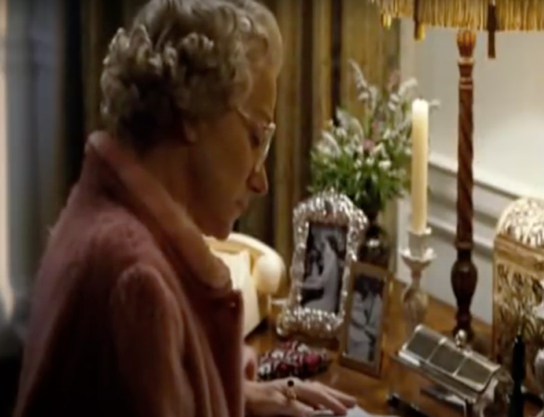
While the Queen notes down her emotions and thoughts (presumably) down in her diary as she prefers to internalise the absurdity of the events with dignity and concealment, the Prime Minister chooses to make a public statement regarding this matter. Once again, there is a clear difference in the way these two characters are presented, with the Queen dressed in the sophisticated robe while the Prime Minister is dressed in the Newcastle shirt, highlighting his active approach to the matter. His clothing further suggests he too is a patriot of the country represented by his love for football.
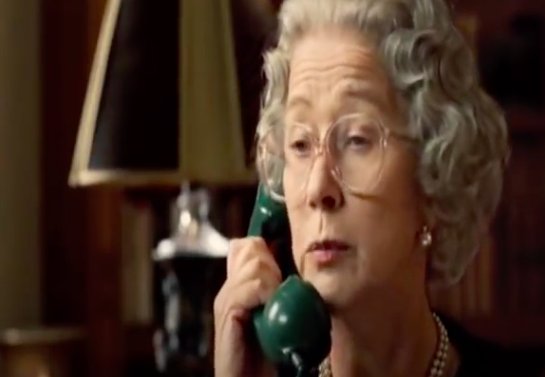
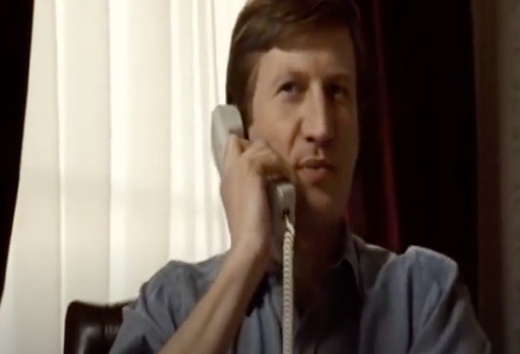
Alistair’s mischievous indication draws the audience’s attention away from the media as the culprit for Princess Diana’s demise. The subtle yet piercing hint is prevalent, signalling the Royal Family as perhaps the perpetrator for the death of the People’s Princess. As such, it is apparent to many of the complications within the relationship between Princess Diana and the Royal family.
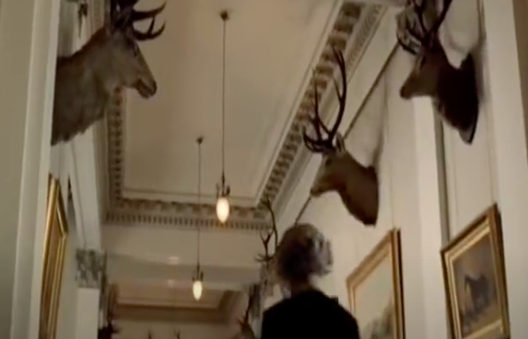
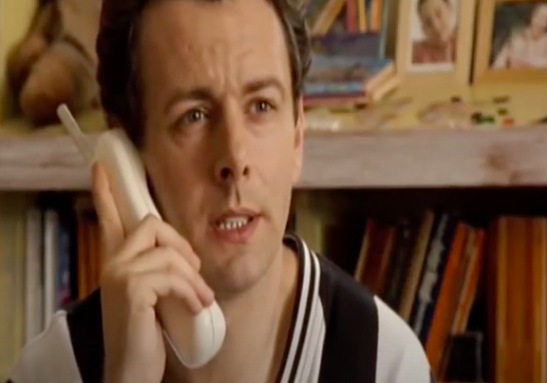
Here, the clash between privacy and publicity is clear from the close up between the Queen and the Prime Minister. It can be assumed from the two devices that they are using, the Queen is more comfortable with traditions and familiar with being ‘tied down’ by protocols while Blair is more ‘modernised’ in comparison, as the device is not confined by the chord, suggesting he is freed from the boundaries of tradition.
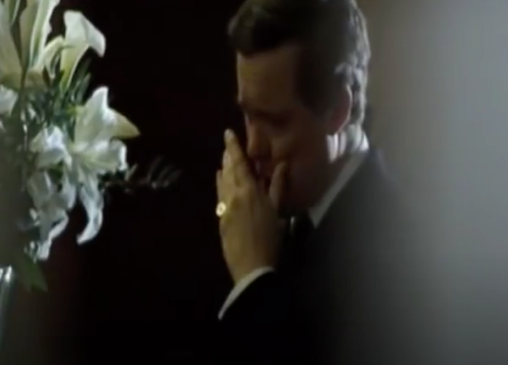
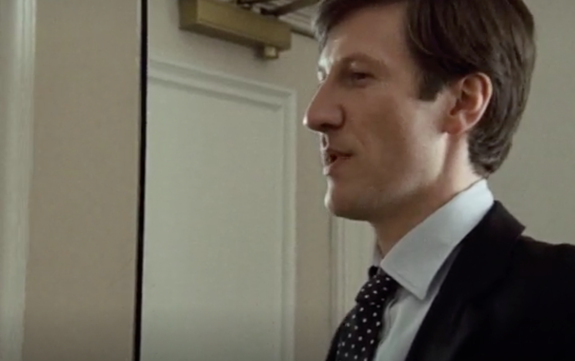
The true impact of the Princess’ death can be seen on the faces of those grieving her death. In comparison to the indifferent Janvrin, the rest of the maids serving the Royals are visually distraught upon this news and find comfort in the phrase the “People’s Princess” as they recognise her importance. Similarly, Charles is seen to also express his grief upon seeing his death ex-wife. The window frames functioning as a visual obstruction suggest the importance of privacy for the Prince who have just come to face the shocking reality of her death.
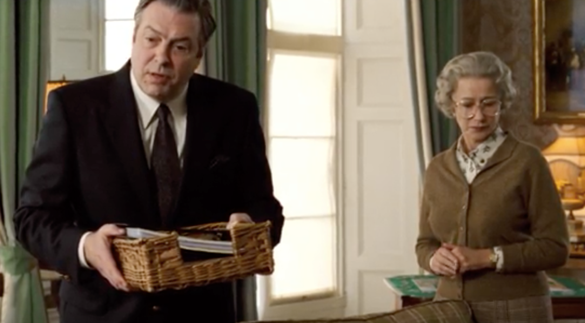
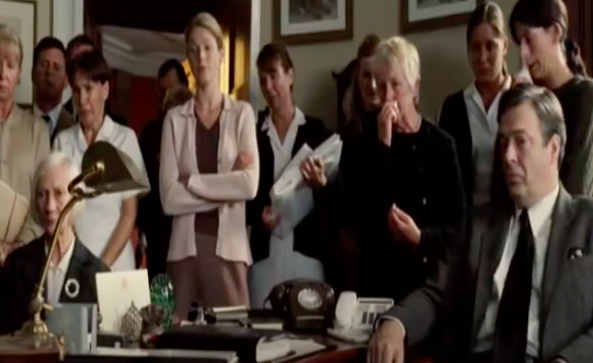
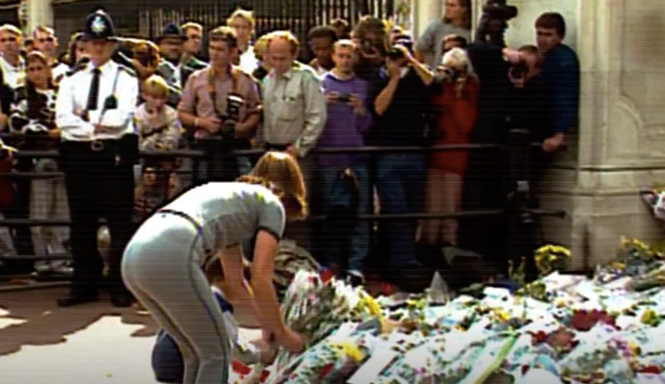
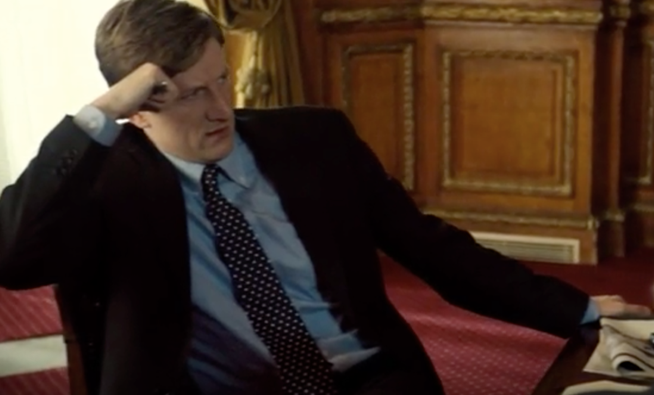
Once again, there is an insertion of real life footages, and notice the date at the bottom left corner (Monday), suggesting the people’s tremendous adoration for the Princess that stops them from carrying out daily responsibility. Therefore, this further serves to solidify her position in the people’s heart, as suggested by the various news outlet. With this, the Prime Minister receives a positive review from the media, and of course, this reflects negatively on the Royal family who have yet to make a statement about the matter. The mid body shot on Alistair suggests that he too, like Cherie holds little sentiment towards the Monarchy as he is visibly uninterested in the long procedures and ‘sophisticated’ language used by the Lord Chamberlain.
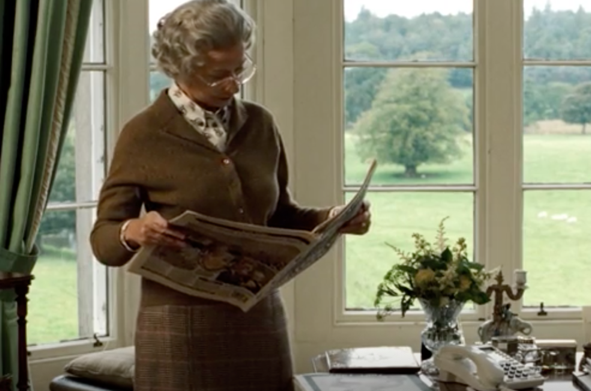
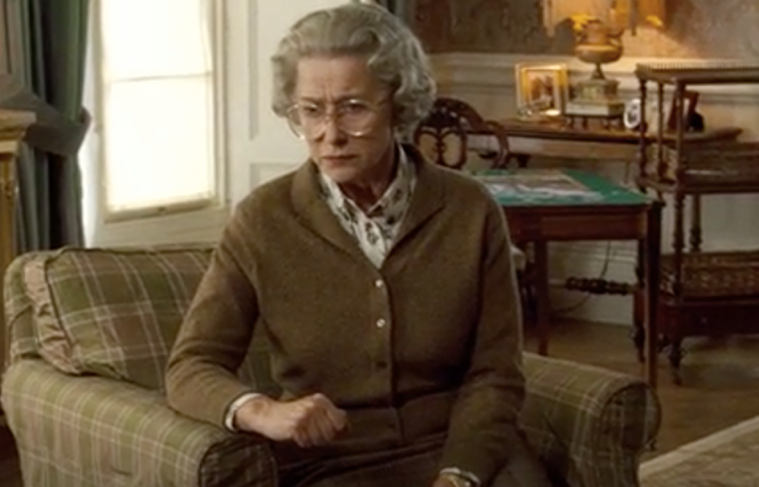
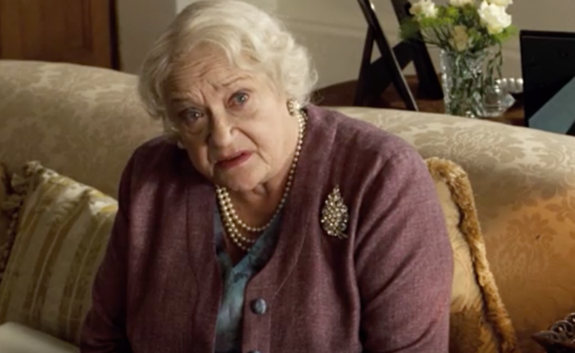
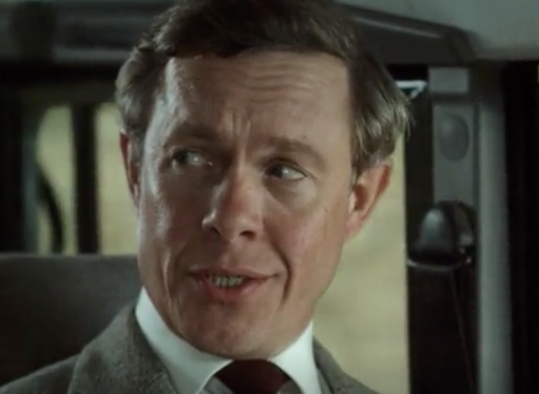
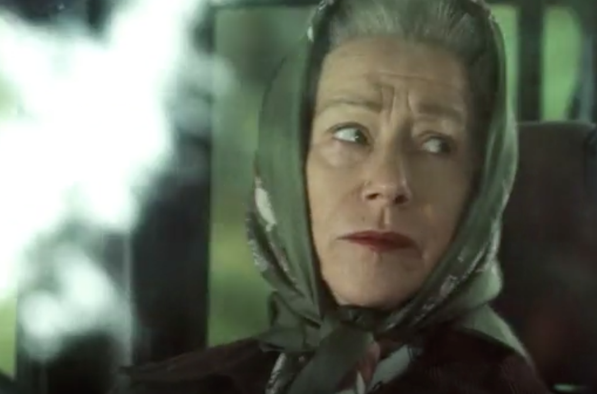
The suggestion to hold a public funeral for Diana does not sit right with the Queen and the Queen mother. In particular, the mid shot to their respective facial expressions both demonstrate disapproval and the lack of content for the decisions. At the thought of having celebrities to march with the band send both almost into a shocked state as the Queen is unable to respond to the decisions made regarding the flowers in front of Buckingham Palace and the Queen mother is distraught.
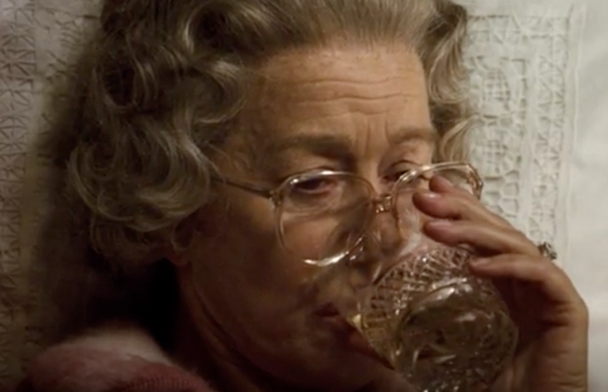
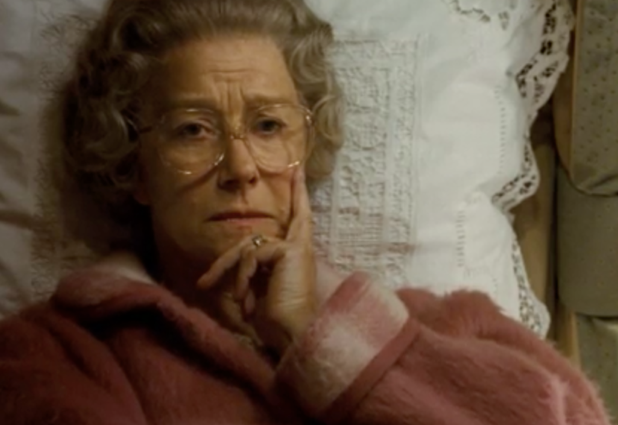
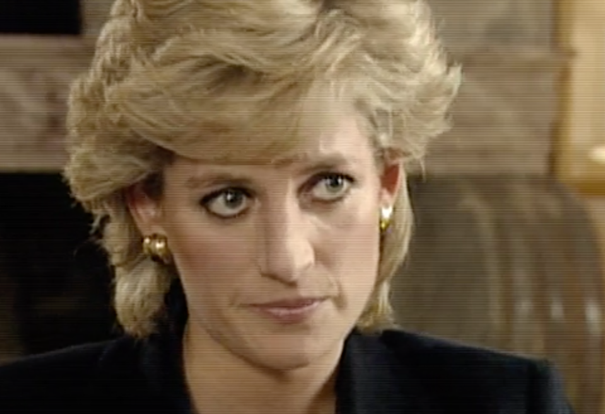
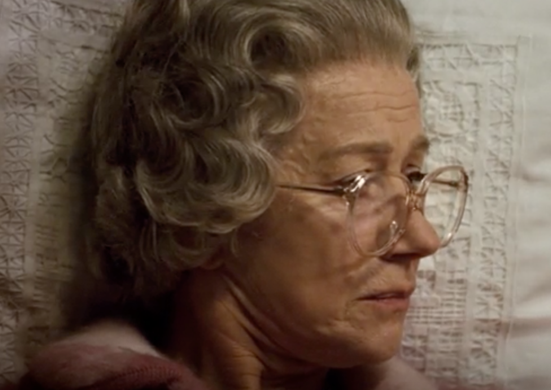
The confrontation between Prince Charles and the Queen discusses the importance of familial love and the physical expression of love. The close up on Charles face shows a sense of desperation almost, for his mother to express the same motherly love that Diana has towards the two young princes. The close up shot on the Queen suggests her wishes to also extend a gesture of concern. Yet, the instance Charles mentions his fear of being shot, she becomes visibly upset about his weakness and resolves to retreat herself from the situation. As such, this further solidifies her preference for restraint and solitude as she deals with emotional matters in private.
As the Queen watches the iconic footage of Diana discretely criticising the Royal family, her expressions become rather saddened and worried, reflecting her sombre and depressed mood due to the current unprecedented events and perhaps even her own remorse at the treatment the Princess received. With Philip once again delivering callous remarks about Diana and suggesting subtly of his own infidelity kept in secret, the close up shot on the Queen’s face illustrates her diverting her gaze from Philip. She showcases a hurtful expression as she reaches for a drink, alluding to the fact that she too, like Diana had a marriage that is anything but a fairy tale, yet she chooses to stay. Thus, the Queen is depicted as formal, aloof, professional and her husband, the Duke of Edinburgh, as irascible and opinionated.
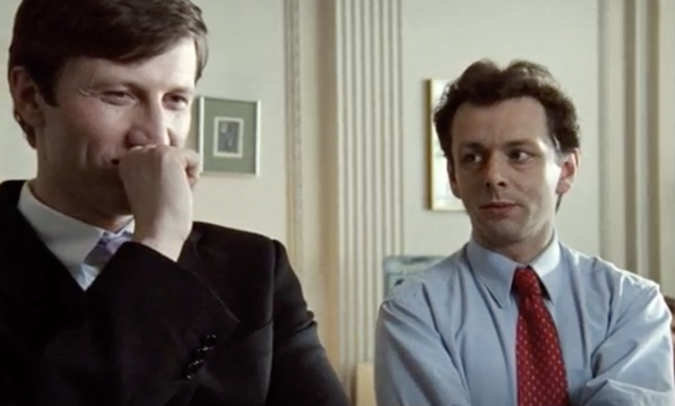
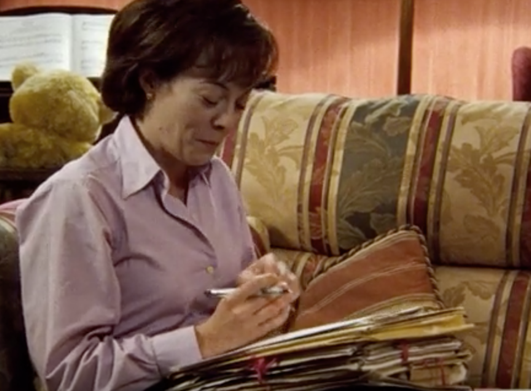
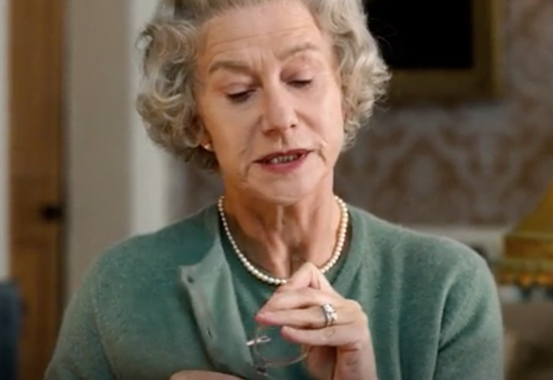
The scene composed of the Prime Minister and the smug Alistair fortifies the Republican’s amused reaction to the media’s mockery of the Royals. Interestingly, the Prime Minister does not share the same sentiment and is rather concerned for the reputation of the monarchy, as such this suggests his values are not as radical as initially presented. The composition of the scene represents Alistair to hold the dominant position, suggesting the wide spread view of the public towards the clumsy means in which the Royals are handling the situation, whilst the Prime Minister hold the minor interest in preserving the monarchy. However, the choice to raise the flag half-mast is denounced severely by the Royals, and in particular Prince Philip delivers the Traditional sentiment in a dismissive manner. This conversation is discussed away from the two Princes, suggesting their consideration for the children upon the passing of their Mother. The fast-paced music however, ironically contradicts Philip’s reassurance that things will just return to normal.
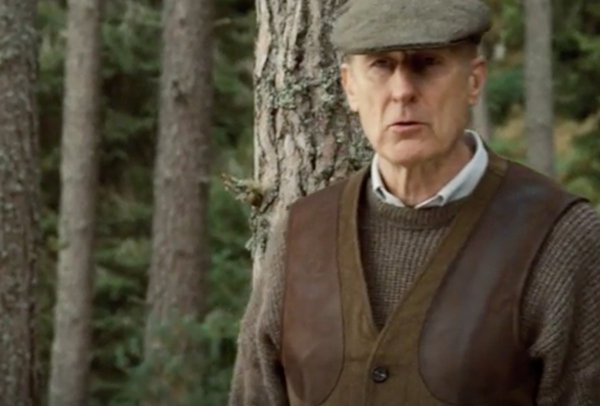
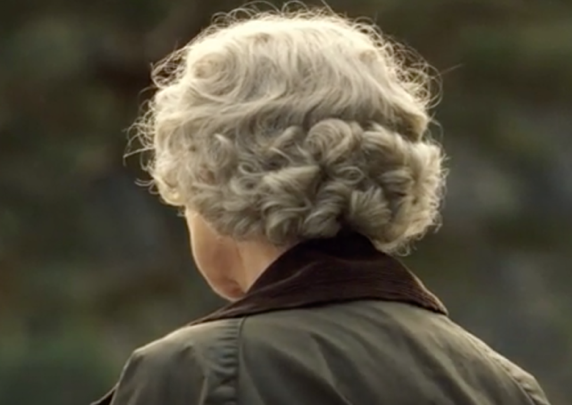
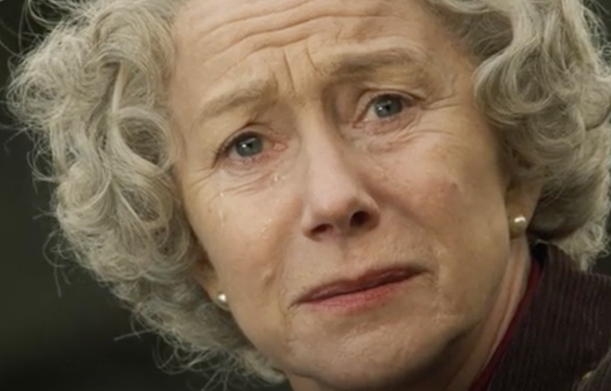
The discussion between Cherie and Blair imply his desire to preserve the Monarchy, contrary to what would have been expected of him as a radical moderniser. The audience also receive a subtle glimpse into his ambitions in monopolising both the public affection as well as the approval of the Queen in order to further his agenda. His understanding of the public’s high regard for the Royals distinguish him from the rest of Republican sympathisers who believe it is a time for change. However, the Queen does not simply give in to Blair’s suggestions, indicated by the act of clearing her specs and aligning the pen, suggesting she can see his motives clearly as well as her preference for order and protocol.
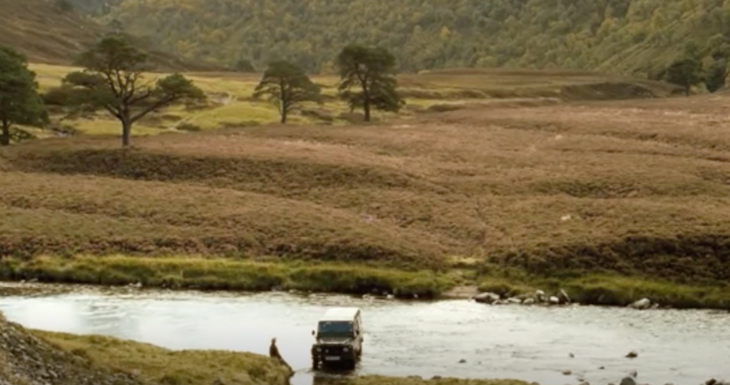
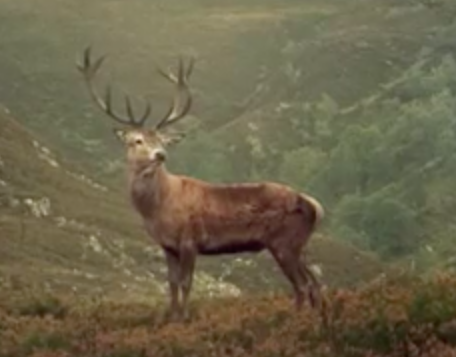
The iconic stag scene suggests the Queen’s vulnerability and the first time she lets down her guard. As she drives the vehicle prior to her encounter with the majestic creature, this is indicative of her desperate attempts to flee the current situations. The sign of her car breaking down signifies her inability to escape the adverse circumstance at hand. As such, this serves as the last straw as she too ‘breaks down’ in tears in silence, with dignity. The moment she faces the stag, the camera zooms in to capture her sorrowful expression, indicating her weakness shown the first time and humanises her character. The stag holds symbolic significance, paralleling the Monarch who is under the scrutiny of the public and will be hunted any minute now.
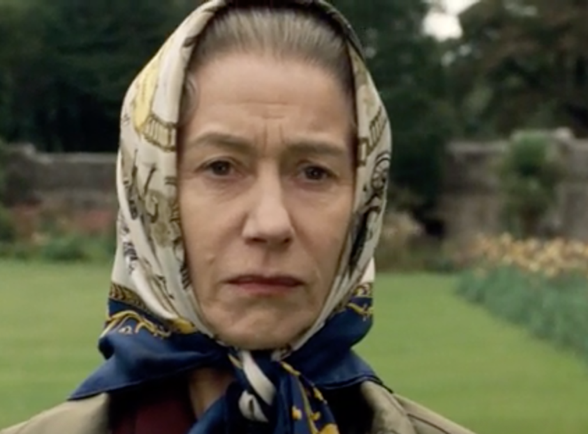
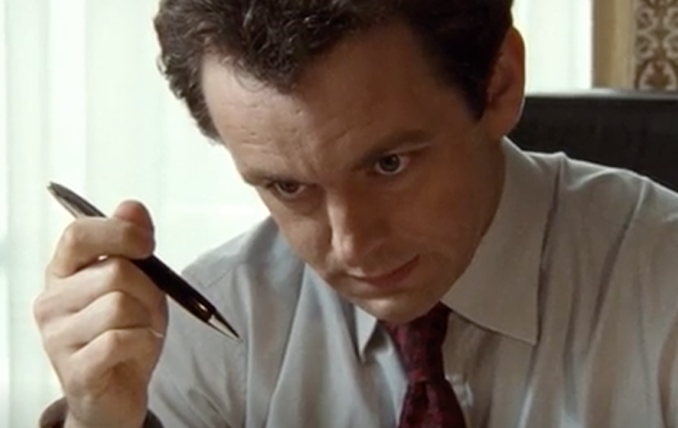
As the Queen listens to the advice given by the Queen Mother, her words echo in the background but the focus of the frame is on the serious expression of the Queen. As such, this alludes to the understanding that she must choose a different alternative than rely on the past traditions that have stabilised the institution for this long. Therefore, even though her decision is met with scrutiny, in particular by Philip who expresses his disdain openly, she remains headstrong with her choices. Charles on the other hand praises her efforts, with her not batting an eye in his way, further signifying her extreme disapproval of her own choice, yet she humbly abides to serve the interest of the nation. Here, what becomes prevalent is the motivation of the Prime Minister in getting on the good side of both the Queen and the public, as Alistair sees through his intention to be seen as the saviour of the nation.
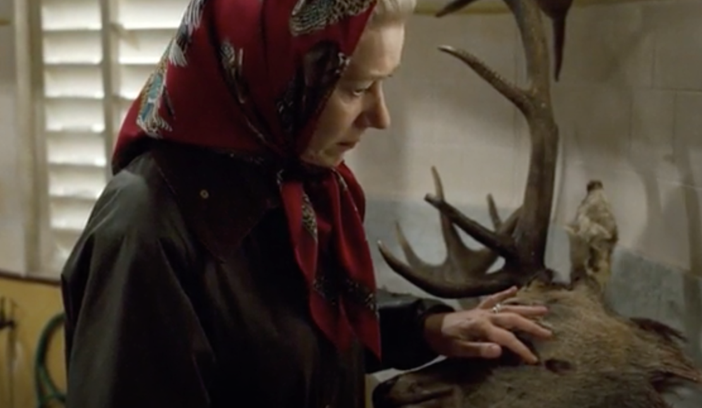
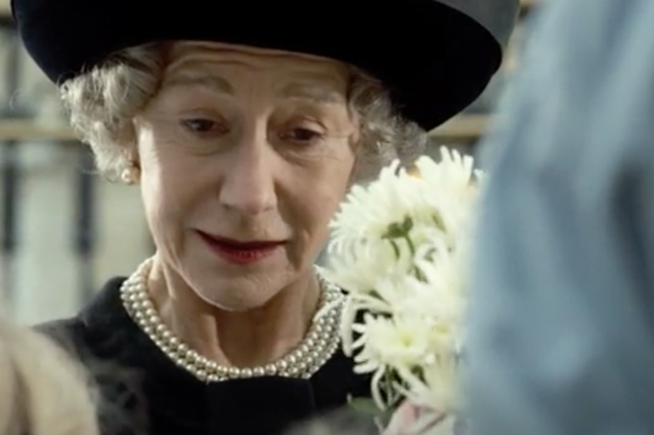
Upon seeing the 14-pointer stag being shot, the Queen expresses her emotions in a restraint manner momentarily before brightly smiling and congratulating those who hunted him. This suggests the fear of her own fate being hunted by the public, yet she puts on a brave front as always to others. The instance she is greeted by the young girl at Buckingham Palace and is gifted the bouquet, her faith in the people is restored as her expression brightens up for the better. As such, this parallels what the Prime Minister expected earlier on as he believes the British people still hold a strong belief in the monarch. The stag may also represent beauty of the nature, Diana, and the monarchy and its traditions. All three are or were struggling to maintain beauty and dignity as an extension in a world corrupted by unjust social behaviour. The stag wounded by the bankers suggest the economic wellbeing being disrupted by them, including that of Europe’s. The commercialism in the modern age with its preference for money over beauty and dignity targets the beauty of nature, Diana and the monarch. As such, the foreboding death of the stag presents the imminent death of beauty and dignity.
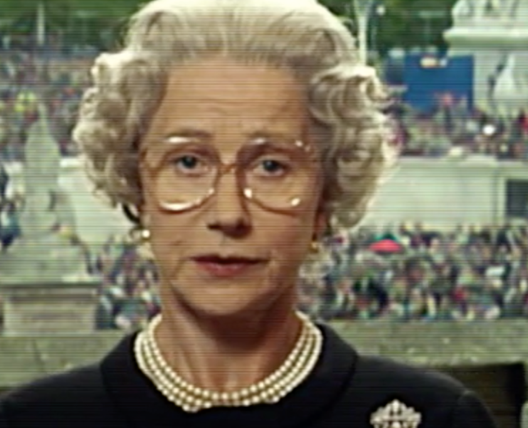
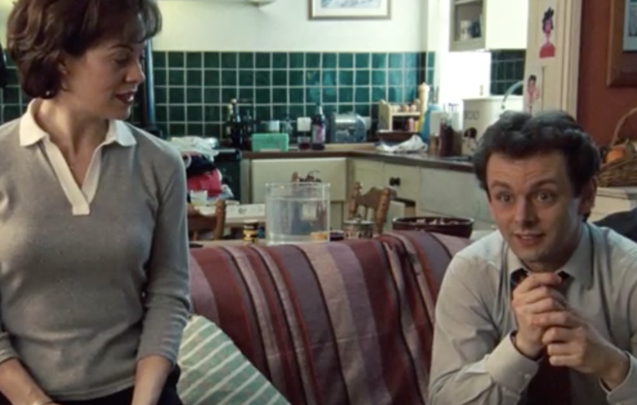
The director purposely chooses the colour scheme to reflect a warmer and brighter tone to underscore the authenticity of the instance the Queen delivers her speech, as well as subtly hinting at the way in which the Queen has been humanised the instance she decides to make this difficult speech. In response to seeing this, the mid shot of the Blairs demonstrate the reactions at the two extremes of the spectrum with Cherie disagreeing with how genuine the Queen and the Prime Minister admiring her efforts. This is implied through the proxemics presented in the scene, as the distance between the two mirrors their differing perspectives.
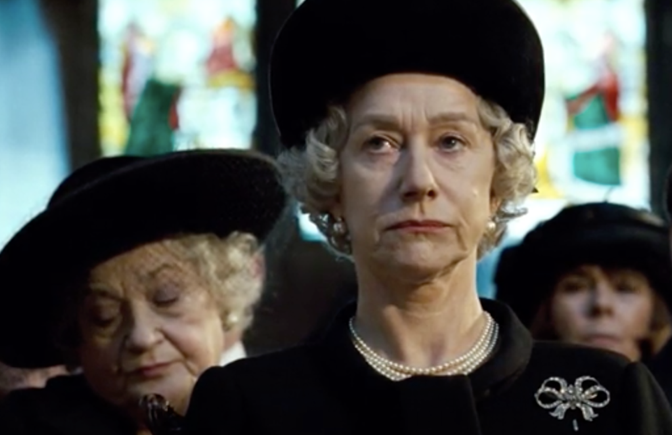
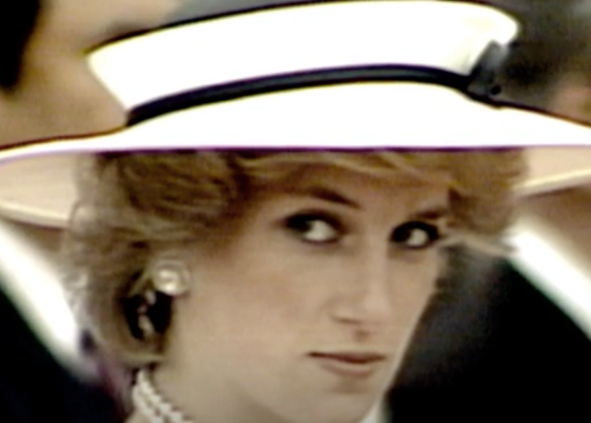
The stark contrast between the traditional attire adorn by the Queen in comparison to the stylish white hat worn by Diana solidifies the dichotomy. The eerie last gaze of Diana denotes her impact on the Royal family as the audience is situated to be slightly disturbed by this lingering scene, perhaps recognising a different side to the Princess for the first time as she appears rather cold and distant. The Queen Mother’s negative view on the Princess is prevalent as she appears to be asleep during the … On the other hand, the Queen herself appears indifferent but pays full attention to the ceremony regardless. Charles himself appears remorseful as tears are at the corners of his eyes.
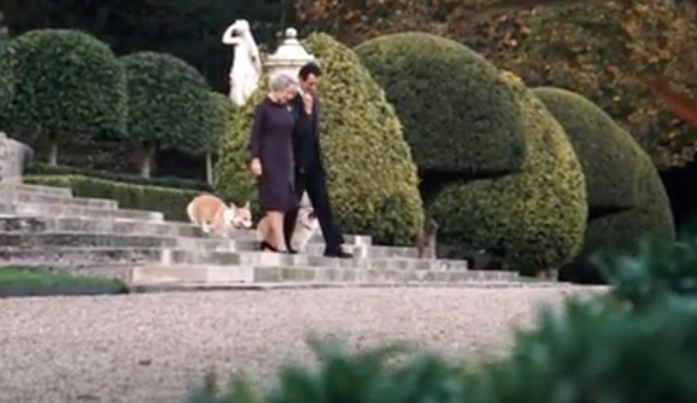
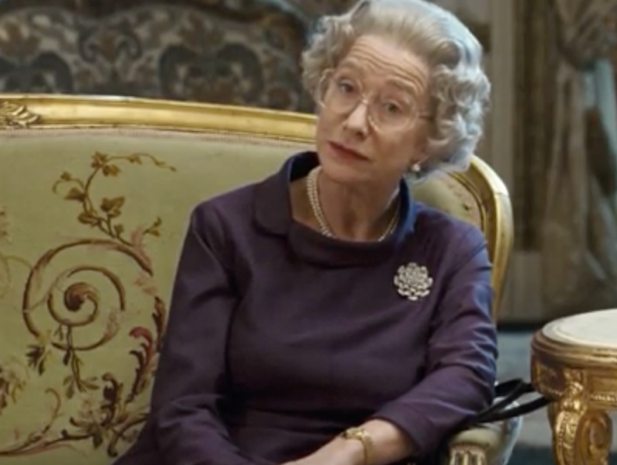
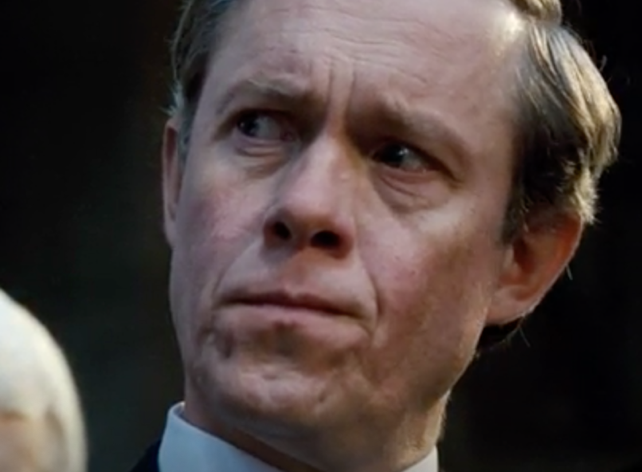
The Queen reasserts her dominance over the Prime Minister, indicated by her comfortable and witty responses to his conscious and careful remarks. As she admits her inability to express her emotions, the two are seeing eye to eye for the first time as her genuine confession showcases her weakness and unfamiliarity with the people’s changing values. As the pair walks in the part, the atmosphere appears more natural as the tension eases, signifying the possibility of a positive outcome for the professional relationship for the future.
QUOTE ANALYSIS
TRADITION VS. MODERNISATION
“It wasn’t for Mr Blair” -the Painter, Mr Crawford
“You’re not a moderniser then” -the Queen
Mr Crawford illustrates the glory of the Queen through the brilliant painting of her expressionless and dignified portrait. His justification for traditional values reflect the Queen’s opinion of Blair leading Britain on the road of modernisation. As such, Mr Crawford, and the Queen both hold scepticism towards the election.
I rather envy you being able to vote. Not the actual ticking of the box, although, I suppose, it would be nice to experience that ONCE. But the sheer joy of being partial.
As the Sovereign of the state, the Queen is supposed to maintain the impartiality and level-mindedness. This further alludes to the requirement for her to sustain the long established traditions, as that is what she has grown up to know and comply to. She has yet to be exposed to anything else, therefore preventing her from being flexible in her approach to different situations.
“In Balmoral, all seems to breathe freedom and peace, and make one forget the world and its sad turmoils.” -the Queen quoting the late Queen Victoria
The dream-like description of Balmoral alludes to the moment the Royal family retreats to the usual getaway as a means to revitalise the gloomy atmosphere in the family upon the tragic death of Diana. In addition, the royals’ ignorance to the importance of the unfortunate death of Princess Diana is foreshadowed at this instance as the obliviousness of the Imperial family and inability to face the “sad turmoils” suggest the lack of acknowledge the changes in the sentiment of the public towards the highly influential figure.
They kept faith with Princess Diana. They liked her. They loved her. They regarded her as one of the people. She was the people’s princess. And that’s how she will… stay, how she will remain, in our hearts and in our memories, forever. -Prime Minister
A bit over the top, don’t you think? -Janvrin
Janvrin too, like the rest of the Royal family, is oblivious to the influence of the Princess in the eyes of the people in the nation. As such, he is a direct representation of the sentiments of those who regard Diana as a threat to the traditional values, ignorant to the ways she has moved the public with her numerous charity works and her openness to the people. In seeing the reactions of those moved by the speech of the Prime Minister, he too becomes aware of the great influence of the princess.
God. Will someone please save these people from themselves? -Prime Minister
The ironic words of the Prime Minister echoes the path of self-destruction of the Royals as their concrete belief on traditions are turning the British public against them. Blair however, demonstrates his concern for the ruling monarch as he attempts to salvage the situation by appealing to the Queen.
“Something’s happened. There’s been a change” – the Queen
Nowadays people want glamour and tears, the grand performance. I’m not very good at that. I never have been. I prefer to keep my feelings to myself. And foolishly, I believed that was what the people wanted from their queen, not to make a fuss nor wear one’s heart on one’s sleeve. Duty first, self second. That’s how I was brought up. That’s all I’ve ever known. -the Queen
But I can see that the world has changed. And one must… modernize. -the Queen
One of the critical difference driving the tension between the Royal family and the Prime Minister is their respective views on the British people. The battle between the tradition held for “more than 400 years old” and the understanding that “one has to be flexible” is at the core of the disagreement between two respective parties. Of course, there are logical reasoning behind the two respective views, hence making the situation increasingly difficult as there is credibility from both ends.
The Queen’s dignity, reserve and devotion to duty and her certainty in her choices are inarguably her greatest strengths as a monarch. Her restrained actions are perfectly aligned with her philosophy. Her formality, insistence on protocol, and proper conservative dress physically define who she is and what she represents. Thus, she is rigid and inflexible, presenting to be strongly associated with the standards of protocol rather than genuine human connection. Thus, this is her greatest weakness as well.
Britain is at a delicate time of change upon the death of the beloved Princess. Here, the traditional means and the protocols subject the princess to be treated as a regular individual rather than a member of the Royal family following her divorce with Prince Charles. According to the appropriate conduct and the wishes of the Diana’s family for privacy, the Queen resolved to have the matter dealt with in a discrete manner. Yet, what has not been accounted for is the connections the Princess had that have long transcended the boundaries of regulations alone. As such, there is an emergence of the public responding hysterically regarding Diana’s death is an unprecedented adversity.
As such, when the Queen is targeted by the press regarding the need to publicly announce her grief for Diana, the Queen feels a connection with this stag, precisely at a time when she herself is being “hunted and brought down” by a citizenry. She calls him “a beauty,” as he is something ethereal, magical, and “otherworldly” like how the monarch is seen in the eyes of the public. She hopes that “he did not suffer much” when the shooting party had to follow him for miles before finishing him off, suggesting the fear of her traditions being replaced by this modernisation/
MEDIA REPRESENTATION/ MANIPULATION
She may have encouraged all that, but still… that was always the extraordinary thing about her. Her weaknesses and transgressions only made the public love her more. Yet ours only make them hate us. Why is that? Why do they hate us so much? -Prince Charles
Not us, dear. -The Queen
Anyway, you got raves in the press. This lot call you “The nation’s mourner-in-chief.” This lot says you’re the only person who’s correctly judged the mood of the country. -Alistair
This suggests the manipulation of the media which has now shifted in favour of the Prime Minister, who griefs with the people during the difficult time. His acknowledgement is thus juxtaposed against the Queen’s criticism for her indifferent outlook on the matter.
A chance to what? This is a family funeral, Mr. Blair, not a fairground attraction. I think the princess has already paid a high enough price for exposure to the press, don’t you? -the Queen
I think it’s disgusting that they have not appeared or said a word relating to all this. – One of the citizen.
Well, in one sense, it’s comforting. For the first time, my parents can see what it’s been like for me all these years, being up against her popularity. -Prince Charles
I believe a few overeager editors are doing their best to sell newspapers, and it would be a mistake to dance to their tune. -the Queen
The film depicts media manipulation and representation controls and dictates the freedom of the characters in expressing themselves as they are moulded to act and present themselves in a way that is favourable, with the least amount of scrutiny as much as possible. The Royal family’s response to the death of Diana for example, demonstrate the power of the media in diverting the attention of the public from the paparazzi who were present and actively pursued Diana before the time of her death to the ignorant members of the Royal family. As such, the desire for the matter to be dealt with in privacy in turn is presented to be a sign of refusal to acknowledge the importance of the Princess to the public. Thus, even though the audience sees the family’s concern for the two Princes after the death of the matter, not willing to publicise the matter for the sake of her children, the media interprets this as silence and disrespect to the princess and the public.
Simultaneously, Diana too herself is the most prominent illustration of the figure who longs for the freedom from the media attention. The sound of shutters and media reports corrodes privacy as individuals are constantly placed in front of a camera. In particular, the various sounds at Ritz hotel are chaotic and overwhelming, prior to the moments of Diana’s death. Her desperate attempts to over the lenses suggest her desire to be freed from the constant preying from the public regarding her every move and choices.
In essence, the various news outlets understand the partial public sentiment but also orchestrate the matter to intensify the outburst of emotions by the public. For example, The Guardian and Independent were unlikely to take up the cause of Royal Family, the conservative Daily Mail was always democratic in tone and much of the rest, including The Times and The Sunday Times, was owned by Rupert Murdoch, an Australian with known republican sympathies. The Murdoch-owned newspapers – especially The Sun and The News of the World – quickly adopted an antagonistic stance towards The Queen’s decision to remain in Scotland and challenged the Royal family to react. As such, through understanding the motivations of the people behind the creation of this content, it is plain to see the means in which media is presented to favour only a partial truth, therefore audience needs to be more critical of what they see.
FAMILY RELATIONSHIPS
“She’s mother to your grandchildren”- Prince Charles
“Perhaps now you might like to consider whether it’s still an extravagance to bring back the mother of the future King of England… in one of our planes.” -Prince Charles
Charles openly expresses his sorrowful emotions. However, this sentiment is not shared with the rest of the Royal family as their reactions are rather aloof, more interested in the influences of Diana’s death on the family rather than the tragic accident itself. His restrained and heart-wrenching words are critical of the Queen’s indifference, who finds it difficult to express her concerns for her son. As such, this suggests the fractured relationship within the establishment
I don’t want the boys to see the news and upset. First thing in the morning, I want the radio taken out of the bedroom and the television taken out of the nursery. -The Queen
This suggests the devastating influence of the media on the lives of highly publicised individuals. As such, the Queen who has had and extended experience with the corrosive impacts of the media, chooses to shelter her grandchildren as much as she can to ensure they are not reminded of this tragedy. This also alludes to her decision to remain separated from the public sphere of criticism, a decision which calls upon others to question her authority.
Something about Diana managing to be even more annoying dead than alive. -Prince Philip referring to Margaret’s scathing words.
The way in which Prince Philip delivers the scornful words by Princess Margaret lacks any genuine feelings. As such, this suggests his callousness and disregard for Diana and establishes the treatment Princess Diana received since the beginning to the end of her marriage to Charles. In response to his questionable remarks, the Queen doesn’t reciprocate his touch on her shoulder, suggesting even though they are married, the relationship between the two is rather distant.
Whatever else you may have thought of Diana, she was a wonderful mother. She adored those boys, and never let them forget it. Always warm and physical. Never afraid to show her feelings. -Prince Charles
What, so it’s ok for his mother to take the bullet and not him? What a family. -Prime Minister
She was a nice girl…then. And I was sure he’s given the other one up. Or at least make sure his wife toed the line. Isn’t that what everyone does? -Prince Philip
Well, if she were alive now, your mother would be exactly the same age. I mean, you’re always saying how hysterical she was… old-fashioned, uncomplaining, lived through the war. -Cherie
Cherie’s slightly sarcastic sayings take a slight jab at the Prime Minister who perhaps view the Sovereign as a mother figure due to the similarities between his deceased mother and the Queen share. As such, this suggests the respect the Prime Minister holds for the Sovereign and the extent in which he will go to ensure the monarchy stays in power.
A lot of slamming doors. I think they saw the papers. -Prince Philip
It is understandable why the Royals are keeping the situation private for the two young Princes. The extremely delicate matter can affect the children profoundly, a matter which is only exacerbated by the public. As such, the Queen’s protection of the boys can be seen as an act of love whilst to others, it can be seen as ignorance and cowardice.
The family relationships within The Queen is fraught with complications. One of the most significant examples of this is the strained connection between the Queen and Prince Charles. The awkward manner in which the Queen tries to extend her arm to console the grieving Charles but quickly retreats herself indicates her inability to showcase maternal love in a physical manner as she has been brought up to be dignified and distant towards all the matters in her life, and that too is inclusive of the way in which she relates and treats her family members. In this regard, she is proposed to be a stark dichotomy to princess Diana, known for her affectionate and warmth to those around her from Charles’ description of her. Thus, it is as though he bluntly criticises his mother for her lack of concern in regard to his wellbeing, presenting him as cowardice and fearful.
In addition, the Royal family acts on the behalf of the two young Princes in the time of adversity to mitigate the negative impacts of the public on the death of their mother. However, an act of sacrificial from the Queen to retreat to rural Scotland for the sake of her grandchildren is depicted to be stubborn and emotionless.
What is subtly implied is also the lack of intimacy between the Queen and Prince Philip, as opposed to the Blairs who are constantly seen to be close together with Cherie adjusting his tie, and making the family breakfast. On the other hand, the Queen rarely reciprocates her husband’s touch, and is rather unresponsive to the term of endearment “Cabbage”. Thus, the Royal relationships envied by others are riddled with complications of their own. Yet, such matter is dealt with discretely and without major commotion, fitting with the Queen’s character.
POWER DYNAMICS AND LEADERSHIP
“The Prime Minister is on his way, Ma’am.” -Jarvin
“To BE, Robin. Prime Minister to BE. I haven’t asked him yet.” -the Queen
“No, Mr. Blair. Mr. Blair, I ask the question. The duty falls upon me as your sovereign to invite you to become prime minister and to form a government in my name.” -the Queen
The Queen asserting her dominance and status and the rigid reliance on traditions, the authority belongs to her even though Mr Blair is the Prime Minister elected by the people, she is the true authoritative figure. In particular, her town is rather urgent and defensive, reflecting her subdued concern for the upcoming changes this radical Prime Minister is planning to bring as his values greatly contradict hers.
“Thank you so much for coming. Now bugger off.” Cherie
Cherie mimics the Queen’s quick dismissal of them, suggesting her disapproval of the Monarch and simultaneously her preference for the Republican values. In addition, her straightforward speech deems her character to be rather realistic and pragmatic as she plainly displays her mockery due to the lack of genuine acknowledgement from the Queen.
“I am not a political figure.” -Princess Diana
The widespread criticism and scrutiny directed at the Princess suggest the public’s adoration and obsession with her as an individual with power and influence. Yet, from her poignant and memorable words, one is made aware of her desire to be freed from the preying eyes of media, to live her life of her own with the rights to privacy rather as an existence solely for the public.
“she’s only been dead for an hour” -Prime Minister
This suggests the level of importance Diana has to the British public, and the ignorance of the royals regarding the public sentiment as they are oblivious to the way in which Diana has greatly influenced the people, not limited to the British alone but on an international level.
“Good. Because if we leave it to the royal undertakers, they’ll bring her back in a wooden crate. Oh, God” and “This was Paris, one of the busiest cities in the world, and you could hear a pin drop. “-Prince Charles
Charles understand precisely the conservative values and the strict adherence to traditions and protocols will not sit well with the public who adores Diana with all their might and would want her to be treated with the respect as though she is a member of the Royal family. As such, there is a friction between following the rules and following the heart as tension rises.
You must show more strength. Reassert your authority. Oh. You sit on the most powerful throne in Europe. Head of an unbroken line that goes back more than a thousand years. -Queen Mother
Your whole life. That is a commitment to God as well as your people. -Queen Mother
Tony Blair. Mr. Father of the Nation. -Alistair
I doubt there is anyone who knows the British people more than I do, Mr. Blair, nor who has greater faith in their wisdom and judgment. And it is my belief that they will, any moment, reject this… this mood which is being stirred up by the press in favour of a period of restrained grief and sober private mourning. That’s the way we do things in this country. Quietly. With dignity. That’s what the rest of the world has always admired us for. -the Queen
“One day that might happen to me.” And it will, Mr. Blair. Quite suddenly and without warning. -the Queen
“Where is our queen? Where is her flag?” -Reporter
The British hold strong sentiment towards their Sovereign, suggested by the collective term our. In addition, there is this strong preference to defy the 400 years tradition, something in which the Queen herself has not expected.
So what I say to you now as your queen and as a grandmother, I say from my heart. -The Queen
At the two ends of the spectrum are the Prime Minister and the Queen, one representing the pragmatic perspective of reality while the other is the true sovereign of the nation adamant on traditions as the true determiner of the correct way to rule. It is important to acknowledge that the Queen represents the true formal authority in that though Tony Blair is considered the leader of the country, he still has someone who he answers to. On one hand, the Queen’s strong assertion of devotion to duty and dignity define her perspective on leadership and moral authority to her people. As such, her inflexibility and resolute trust on proper conduct drives the conflict between the two authoritative figures. It is her leadership style which prevents her from seeing the alternative to treating the issue as a public matter.
On the other hand, Blair gains informal authority from the public and becomes the person that shows compassion and understanding for the death of the people’s princess. He understands that the death of Princess Diana, cannot be fixed nor remedied so the people looked for a leader that could guide them through this difficult time where there are no responses from the Royal family. Thus, he gains the momentary trust of the public in correcting judging the depressed mood of the public.
Therefore, what is critical in understanding the motivation of the film is the acknowledgement that real leadership demands adjustments in values and priorities to deal with threats and accommodate with new realities. In addition, with the crisis at hand, individuals can manipulate the situation to take advantage of the adversity as an opportunity to further their agenda. This is clearly presented through the Prime Minister and his supporters, who utilised the situation to improve the approval ratings for the newly elected Minister. Thus, as the Queen recognises the significance of such flexibility, she compromises for the sake of the people, allowing her to emerge victorious and regain the people’s trust. In what she saw as a personal defeat, the Queen emerges publicly triumphant, securing her reign, her power and the trust of the people in the sovereign.
PERCEPTION VS. REALITY
I’d like to be a queen of people’s hearts… in people’s hearts. But I don’t see myself being queen of this country. I don’t think many people would want me to be queen, actually. When I say “many people”, I mean the establishment that I’m married into. Because they’ve decided that I’m a nonstarter. -Diana
“You wait. In 48 hours, this will all have calmed down.” -Prince Philip
“The two Dianas… the public’s and ours bear no relation to one another at all.” -Prince Charles
“A bunch of freeloading, emotionally retarded nutters.” -Cherie
Do you think any of your predecessors would have dropped everything and gone up to London because of a bunch of hysterics carrying candles neede help with their grief? As for that… silly Mr. Blair with his Cheshire cat grin…-Queen Mother
“Let’s hope he didn’t suffer too much”-The Queen
“That woman has given her whole life in service to her people. 50 years doing a job she never wanted, a job she watched kill her father. She’s executed it with honor, dignity and, as far as I can tell, without a single blemish, and now we’re all baying for her blood. All because she’s struggling to lead the world in mourning for someone who… who threw everything she offered back in her face. And who, for the last few years, seemed committed 24/7 to destroying everything she holds most dear.” -the Prime Minister
“I don’t think I shall ever understand what happened this summer.” -the Queen
Characters often act in a way which defies the initial perception of them. For instance, the means in which Charles described Diana suggest hidden conflict between the Princess and the Royal family, something that the public is not aware of due to the way in which Diana presents herself outside of the Palace. As such, the author positions his audience to view matters shown in the film with a critical eye. Similar to how specific scenes can be interpreted in an imaginative way, the way in which individuals are perceived may not truly encapsulate who they are.
On the other hand, the stoic and indifferent Queen is demonstrated initially to be cold and distant. While her actions reflect partially her distant nature, her protective nature investigated by the director regarding the wellbeing of her grandchildren justifies her wishes for the matter to be dealt with in secret for the sake of privacy. Therefore, the author enables an important to the lives of the Royals, who essentially have as much emotions as the rest of the people, the only difference being they need to suppress the expression of such feelings to remain impartial. Thus, what is discovered from the though provoking film is seeing behind the stiff royal veneer and into the heart of the complex human being that is Queen Elizabeth II.
In addition, the references to the outdated perception of Queen Mother and Prince Philip are also included to reflect the inflexibility in times of change. Their ignorance adds further fuel into the people’s anger and demand for the Royal presence. Thus, the biggest hurdle in which the Queen has to overcome is the strong belief in the perception of the people since her time of coronation, a view solidified constantly by those she is surrounded by, juxtaposed with the true reality of her people’s grief at this very instance.
The Queen’s response to the crisis is depicted as motivated by duty and upbringing rather than by indifference to the feelings of her people. However, it is also important to emphasise that her private feelings on the issue are not known and probably never will be as they are merely fabricated by the director. Therefore, the critical scene where she faces the stag in particular, the emotional appeal of the film is indeed something derived sole from the perception of others.
Essay Question 1:
The Queen (2006) highlights the importance of tradition when faced with difficult circumstances. Do you agree or disagree?

